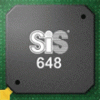-
Posts
6 -
Joined
-
Last visited
Never
Content Type
Profiles
Forums
Events
Posts posted by electronicshacker
-
-
Hacker,
Are you a collector of old computers? Were do you live? I can send it to you if you pay for the shipping.
Ante ::)
Well, no, I don't collect old computers, unless a Pentium 75 counts :)
...But I already have too many computers, and I'd much rather build an IBM compatible (still thinking of doing that!), just for the fun of building it, but I don't have the time. -
That's incredible! And easy to build, too. Looks like I have a new project or two...
-
Outstanding idea! GEE! Why didn't I think about that before? Maybe because I already dark blinds and dark curtains, HA!
street light does a lot of horrible things, not counting shining into my bedroom at night (which I tried to fix with curtains and what not), but also I am a astronomy entusiast. Which you can propably guess, I don't want any light into my telescope!
The only real solution: move away from the city. -
Well mine is not in use so it doesn -
Well, since nearly 100% of the parts I have in my parts bins came from VCRs, printers, motherboards, Tvs, radios, and remote-control cars, I can tell you exactly how to salvage these parts.
First of all, you need to find something with long wires between it and the circuit board. You're better off leaving capacitors where they are, because they are a major pain to get off of the board. What you need is sonething that has long wires between it and the board, such as diodes. Now, most diodes and resistors are alligned parallel to the board with the wires going out a bit then bending down to meet the board. Diodes and resistors are very hard to disconnect unless you happen to get lucky and find some power diodes hovering above the circuit board on two long leads.
Remember that the object odf the game is to repeatedly bend the leads sdo that they break near the board and not near the diode, part, etc. You need some good needlenose pliers that you can use to grip the lead down near the board and rock the lead back and forth until it breaks. Getting the right angle can be a pain. Power diodes are usually found in old printers and other high-amperage devices.
Actually, it's kind of hard to explain all of this. Capacitors are soldered close to the board and you need to use pliers to smash the board up a bit to get to them. That's really hard to do without damaging other components. Chips are not worth even trying to disconnect, because they nearly always break.
Some TO-220 cases can be easily bent near the board enough to dinconnect easily, and most bridge rectifiers are easily disconnected.
So really, you're just going to have to try different things.



Parts from stuff
in Electronics chit chat
Posted
I haven't had much luck desoldering things... even though I have a perfectly good heatsink I could use to cool the pins. I imagine you could damage a cap that is soldered to the board (no place to clip the heatsink).
But, I guess desoldering is the way to go for ICs.